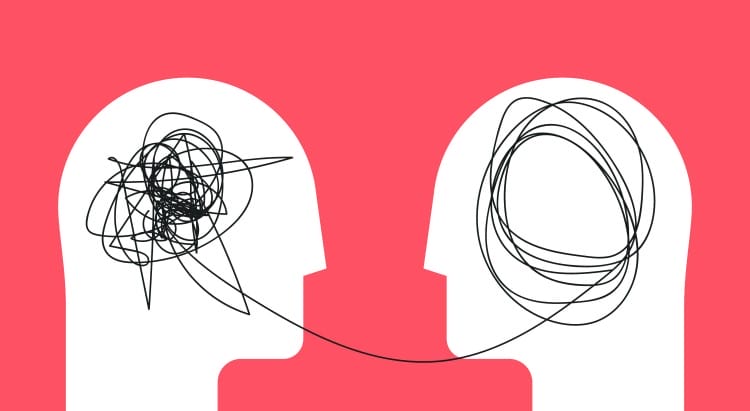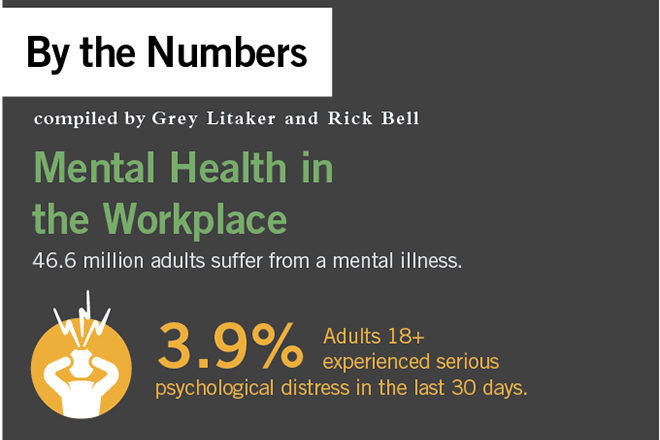COVID-19 clearly has severe and potentially deadly physical symptoms. But that doesn’t mean mental health is something that can be sidelined for now.
Parents with children they must homeschool are feeling the stress of working, teaching and having little to no free time to take care of themselves. People who have certain mental illnesses may find themselves especially vulnerable in times of social or physical distancing.

And employees on the front lines like health care workers, delivery people and grocery store employees may find themselves stressed due to the nature of their jobs and having a greater risk of interacting with people who have COVID-19.
“With the workplace a defining part of many individuals’ lives, managing employee morale and mental health, as well as providing resources and support to help them cope, is understandably top of mind with employers,” said Brad Hammock, co-chair of employment law firm Littler Mendelson’s Workplace Safety & Health Practice Group and a leader of the firm’s COVID-19 Task Force, in a press release.
While businesses must manage many other legal and operational issues, progressive employers are also focusing on resources and means of support to help employees cope, according according to a recent report from Littler.
According to the Centers for Disease Control and Prevention, people who may respond more strongly to the stress of the COVID-19 crisis include those are especially vulnerable to the virus (older people and those with chronic diseases), children and teens, people with mental health or substance abuse issues and caregivers and health care providers who are helping others deal with health issues.
The CDC provides ways to cope with mental health issues — including taking breaks from watching the news, making time to unwind and connecting with loved ones. But the workplace has a role as well.
Also read: Mental health in low-wage workers
HR plays a central role in tempering employees’ feelings of anxiety, according to Human Resource Executive. “Remind employees that every single person in the organization, including the CEO, is facing unprecedented upheaval, fear and uncertainty — and that the only way to get through this is by pulling together and supporting each other like never before,” the article advised.
Further, while employee assistance programs have generally been underutilized, now is an ideal time to communicate the usefulness of EAPs to employees, according to HRE. EAPs address personal and professional challenges that employees may face, including financial problems, substance abuse issues, grief, family issues and stress. These areas of one’s life are also areas that could be greatly impacted by the COVID-19 outbreak, the article noted.
Nonprofit news organization Marketplace suggests that employers offer and communicate the availability of telehealth mental health care. It also noted that accessible, affordable care is important. For example, Starbucks is offering all U.S.-based employees and their family members with access to 20 free therapy sessions starting April 6. These sessions are available through video appointments as well as in-person appointments.
Also read: The Mental Health Parity Challenge
The Canadian Mental Health Association advises that employers communicate in a reassuring manner. “Know that work will likely be impacted — work will slow down, necessary travel may be canceled. Reassure staff that expectations will shift accordingly, and that’s OK. The company will get through this.”
Organizations can also refer employees to reports indicating that most people who become infected with the virus will recover, the Canadian Mental Health Association noted. They can also emphasize with employees that they know this is a stressful time and that it’s OK to feel anxious.
Also read:
- “Taking Care of Your Mental Health in the Face of Uncertainty” (American Foundation for Suicide Prevention)
- “Mental Health And COVID-19 – Information And Resources” (Mental Health America)
- “Mental health and psychosocial considerations during the COVID-19 outbreak” (World Health Organization)
- “Interim Guidance for Businesses and Employers to Plan and Respond to Coronavirus Disease” (CDC)
- “Coronavirus and isolation: supporting yourself and your colleagues” (Mental Health at Work)
- “How to tackle mental health in the workplace as a manager and colleague” (UCL School of Management)
For Workforce.com users there are features on our platform available to keep communication lines open during this difficult time. Engage your staff, schedule according to operational changes, manage leave, clock in and out remotely, and communicate changes through custom events, among other things.



 Sherman also informed the audience at MBGH’s event that the perception of mental health stigma may vary by socioeconomic status. There are two types of stigma — public stigma refers to discrimination or stereotyping from other people and private stigma refers to people internalizing stigma in a way that eats away at their self-worth. Low-wage workers often have a greater sense of personal stigma with behavioral health disorders, Sherman said.
Sherman also informed the audience at MBGH’s event that the perception of mental health stigma may vary by socioeconomic status. There are two types of stigma — public stigma refers to discrimination or stereotyping from other people and private stigma refers to people internalizing stigma in a way that eats away at their self-worth. Low-wage workers often have a greater sense of personal stigma with behavioral health disorders, Sherman said. 

